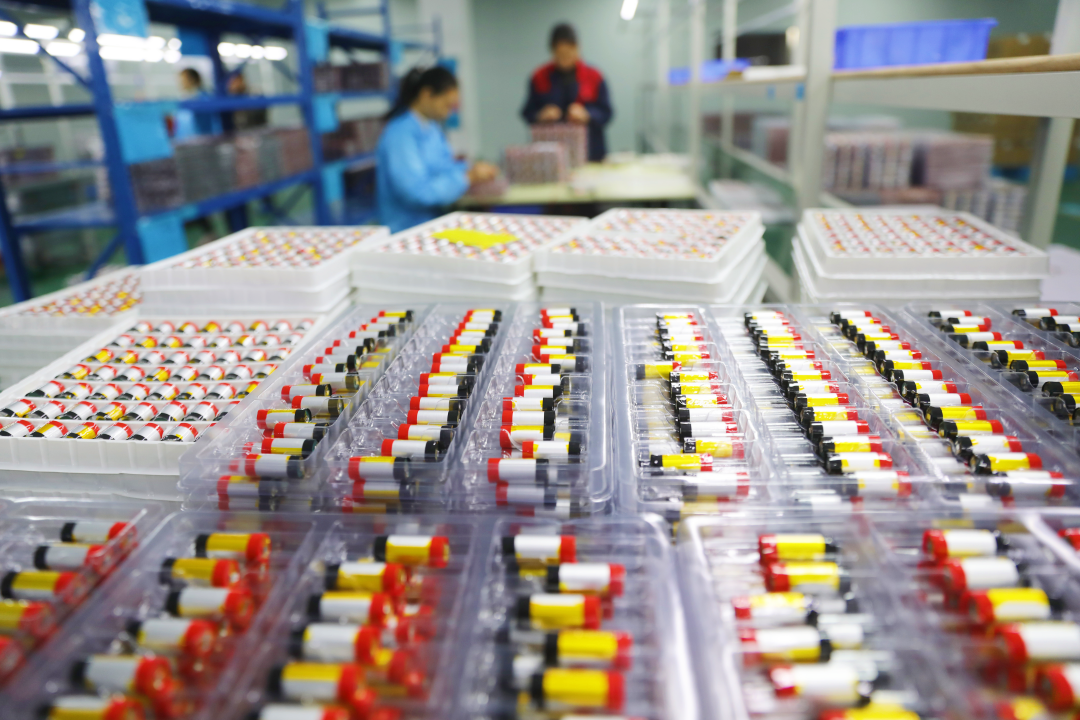Energy Insider: China’s ‘Under Deployment’ of Solar Manufacturing Capacity, Beijing Vows to Be ‘Fully Prepared’ for Summer Power Demand
Listen to the full version

In this week’s Caixin energy wrap, we analyze China’s biggest climate and energy news on policy, industry, projects and more:
● Analysts argue solar capacity is ‘underutilized’
● China remains global leader in offshore wind
● Beijing pledges to ensure summer power supply
● Chinese carmakers expected to export more vehicles
● U.S. ‘10-15 years’ behind China in nuclear power

Download our app to receive breaking news alerts and read the news on the go.
Get our weekly free Must-Read newsletter.
- DIGEST HUB
- China's solar manufacturing capacity is underutilized, with potential to aid global renewable energy targets.
- China leads in offshore wind development, holding the largest global capacity for six years.
- China surpasses the U.S. in nuclear power advancement, particularly in deploying fourth-generation reactors.
In this week’s Caixin energy wrap, key climate and energy-related updates in China include significant insights into solar capacity utilization, offshore wind leadership, summer power supply readiness, electric vehicle (EV) export projections, and nuclear power advancements. [para. 1]
A recent report by Ember, a London-based think tank, claims that the world’s solar manufacturing capacity, mainly based in China, is underutilized. The report argues this spare capacity could help achieve the global goal of tripling renewable power capacity by 2030 and improve electricity access in developing countries. Richard Black from Ember suggests viewing the issue as "under-deployment" rather than overcapacity, considering the benefits solar power brings and governments’ climate commitments. [para. 3][para. 4][para. 6]
China continues to lead in offshore wind power development for the sixth consecutive year, having installed 6.3 gigawatts (GW) of capacity in 2023. According to the Global Wind Energy Council (GWEC), China’s total offshore wind capacity now stands at 38 GW, surpassing Europe by 11%. Despite slower growth after national-level subsidies were cut off in early 2022, China’s offshore wind capacity is projected to double by 2025, increasing from 30.5 GW at the end of 2022 to over 60 GW. [para. 8][para. 10][para. 11]
Amid expectations of an unusually hot summer, the National Development and Reform Commission (NDRC) assures that the Chinese government is fully prepared to meet energy demand. Power generation rose by 5.5% year-on-year from January to May 2023, whereas demand surged by 8.6%. However, power supply may be tight during peak hours in some regions, especially due to extreme weather events and high air-conditioning demand, as warned by the National Energy Administration in April. [para. 13][para. 15][para. 16]
Despite backlash from the European Union and the U.S. against Chinese-made electric vehicles (EVs), China's auto exporters are optimistic about continued global expansion. In 2023, China became the world’s largest auto exporter, shipping 4.91 million cars. Xu Changming from the State Information Center expects this momentum to continue, projecting that Chinese automakers will sell up to 20 million cars overseas by 2035, including exports and locally produced vehicles in overseas Chinese facilities. This comes as the EU plans to impose extra tariffs on Chinese battery-electric vehicles starting July 4, amid an investigation into state subsidies. [para. 18][para. 19][para. 21]
Lastly, an analysis by the Information Technology and Innovation Foundation reveals that China is 10 to 15 years ahead of the U.S. in deploying fourth-generation nuclear reactors. China’s strategic focus on building domestic nuclear reactors is seen as a key advantage. Most nuclear projects in China use the domestically developed third-generation Hualong One reactor technology. Notably, the world’s first fourth-generation nuclear plant began commercial operation in December in Shandong province. This technology promises greater safety, fuel efficiency, and minimal long-lived radioactive waste. [para. 23][para. 24][para. 26]
In summary, China's renewable energy sectors, from solar to wind and nuclear, are marking significant progress despite facing challenges such as high demand and international trade friction. These developments position China as a critical player in the global energy transition landscape. For further inquiries, contact editor Jonathan Breen. [para. 28]
- Early 2022:
- China's government cut off national-level subsidies for offshore wind projects.
- 2023:
- China became the world's largest offshore wind power developer for the sixth consecutive year after installing 6.3 GW of capacity.
- December 2023:
- The world's first fourth-generation nuclear power plant entered commercial operation in East China’s Shandong province.
- January to May 2024:
- China’s power generation increased by 5.5% year-on-year.
- April 2024:
- German Chancellor Olaf Scholz and U.S. Treasury Secretary Janet Yellen mentioned China's perceived industrial overcapacity during their visits to China.
- April 2024:
- National Energy Administration warned that power supply 'may be tight' during peak hours this summer.
- June 12, 2024:
- Ember reported that the world's solar manufacturing capacity, most of which is in China, is 'underutilized'.
- June 16, 2024:
- Xu Changming stated that China became the world's largest auto exporter in 2023 with 4.91 million cars exported.
- Monday (by implication, June 17, 2024):
- Global Wind Energy Council (GWEC) reported that China's total offshore wind power capacity stood at 38 GW.
- June 17, 2024:
- An assessment published indicating that China leads the U.S. by 10 to 15 years in nuclear power.
- By 2025:
- China’s accumulated offshore wind capacity is projected to double from 30.5 GW to more than 60 GW.
- PODCAST
- MOST POPULAR





 Sign in with Google
Sign in with Google
 Sign in with Facebook
Sign in with Facebook
 Sign in with 财新
Sign in with 财新